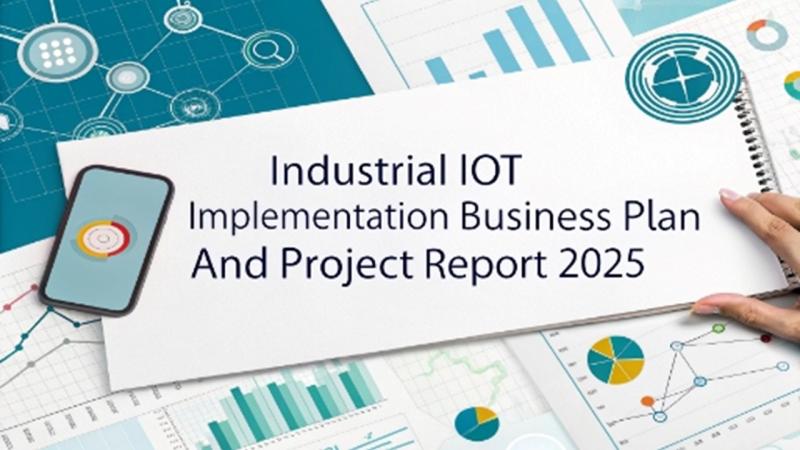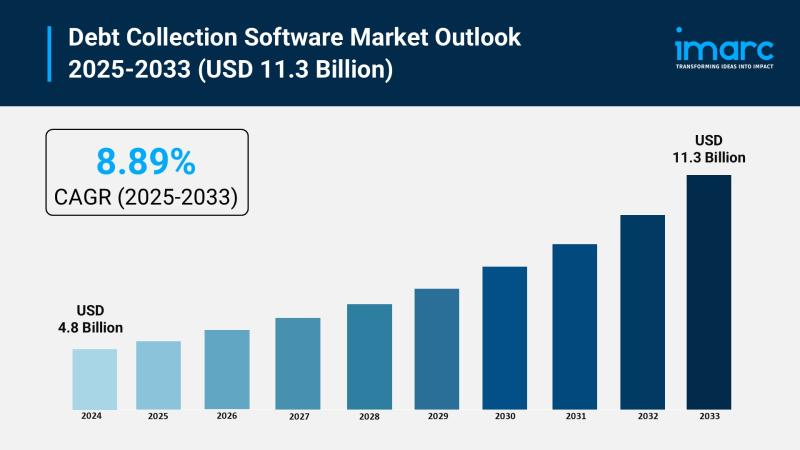Press release
Potassium Sulfate Production Plant Setup Report 2025: Project Details, Requirements and Costs Involved
Potassium Sulfate (K2SO4), also known as sulfate of potash, is a white crystalline salt widely used as a fertilizer. It provides essential potassium and sulfur nutrients to crops, improving yield, quality, and resistance to diseases. Unlike chloride-based fertilizers, potassium sulfate is chloride-free, making it suitable for chloride-sensitive crops such as tobacco, fruits, and vegetables. It is also used in glass manufacturing, pharmaceuticals, and specialty chemical industries.Setting up a potassium sulfate production plant requires access to raw materials like potassium chloride and sulfuric acid or natural sources such as langbeinite. The process involves reaction, crystallization, drying, and packaging units. Efficient energy use, quality control, and compliance with environmental standards are crucial. The plant should be located near agricultural hubs to optimize distribution.
IMARC Group's report, titled "Potassium Sulfate Production Cost Analysis 2025: Industry Trends, Plant Setup, Machinery, Raw Materials, Investment Opportunities, Cost and Revenue," provides a complete roadmap for setting up a potassium sulfate production plant. It covers a comprehensive market overview to micro-level information such as unit operations involved, raw material requirements, utility requirements, infrastructure requirements, machinery and technology requirements, manpower requirements, packaging requirements, transportation requirements, etc.
Request for a Sample Report: https://www.imarcgroup.com/potassium-sulfate-manufacturing-plant-project-report/requestsample
Potassium Sulfate Industry Outlook 2025
The Potassium Sulfate industry outlook for 2025 appears promising, driven by rising global demand for high-quality fertilizers that support sustainable agriculture. As farmers increasingly adopt chloride-free fertilizers for sensitive and high-value crops such as fruits, vegetables, and tobacco, potassium sulfate consumption is set to grow steadily. Expanding population and dietary shifts toward nutrient-rich foods are pushing the need for higher agricultural productivity, further boosting demand. Additionally, its applications beyond agriculture, including pharmaceuticals, glassmaking, and specialty chemicals, are contributing to market expansion. With technological advancements in production processes and growing investments in efficient supply chains, the industry is expected to experience stable growth and strong profitability through 2025.
Key Insights for setting up a Potassium Sulfate Production Plant
Detailed Process Flow
• Product Overview
• Unit Operations Involved
• Mass Balance and Raw Material Requirements
• Quality Assurance Criteria
• Technical Tests
Buy now: https://www.imarcgroup.com/checkout?id=16782&method=1911
Project Details, Requirements and Costs Involved:
• Land, Location and Site Development
• Plant Layout
• Machinery Requirements and Costs
• Raw Material Requirements and Costs
• Packaging Requirements and Costs
• Transportation Requirements and Costs
• Utility Requirements and Costs
• Human Resource Requirements and Costs
Capital Expenditure (CapEx) and Operational Expenditure (OpEx) Analysis:
Project Economics:
• Capital Investments
• Operating Costs
• Expenditure Projections
• Revenue Projections
• Taxation and Depreciation
• Profit Projections
• Financial Analysis
Profitability Analysis:
• Total Income
• Total Expenditure
• Gross Profit
• Gross Margin
• Net Profit
• Net Margin
Key Cost Components
• Raw Materials:
• Potassium Chloride (KCl) and Sulfuric Acid (H2SO4) are the primary raw materials, especially in the Mannheim process. Their prices significantly impact overall production costs.
• Utilities:
• Includes electricity, water, steam, and fuel required for heating, reaction control, crystallization, and drying. Utility costs vary based on energy prices and plant efficiency.
• Machinery and Equipment:
• Capital expenses for reactors, furnaces, crystallizers, scrubbers, filters, dryers, and packaging units. Maintenance and depreciation also contribute to long-term operational costs.
• Labor and Human Resources:
• Costs related to skilled and unskilled labor for plant operations, quality control, maintenance, and administration.
• Packaging and Storage:
• Expenses for bulk bags, sacks, or other forms of packaging, as well as storage infrastructure to ensure product stability and safety.
• Environmental Compliance and Waste Management:
• Costs for treating emissions (particularly hydrochloric acid gas in the Mannheim process), handling byproducts, and ensuring compliance with environmental regulations.
• Transportation and Logistics:
• Involves inbound logistics for raw materials and outbound transportation of finished goods to distributors or end-users.
• Plant Infrastructure and Land Development:
• Includes site preparation, civil construction, roads, drainage, and other fixed facility costs.
• R&D and Quality Control:
• Ongoing investment in process optimization, quality assurance, and testing to meet product standards.
• Finance and Overheads:
• Interest on capital, insurance, licenses, and administrative overheads also contribute to total production costs.
Economic Trends Influencing Potassium Sulfate Plant Setup Costs 2025
• Volatility in Raw Material Prices
Fluctuations in the global prices of potassium chloride and sulfuric acid-driven by supply chain disruptions, geopolitical tensions, and mining output-can significantly impact the initial and operating costs of potassium sulfate plants.
• Energy and Utility Cost Inflation
Rising global energy prices, especially for natural gas and electricity, are increasing utility costs associated with reaction heating, crystallization, and drying processes, affecting the overall plant setup and operating budgets.
• Environmental Compliance Pressure
Stricter environmental regulations, particularly related to emissions (e.g., hydrochloric acid gas from the Mannheim process) and waste management, are driving up costs for pollution control systems, permitting, and compliance infrastructure.
• Technology Advancements and Process Efficiency
Innovations in production technologies-such as cleaner alternatives to the Mannheim method and integrated systems-are reducing long-term operating costs but may raise initial capital expenditures due to advanced machinery and automation.
• Government Subsidies and Fertilizer Policies
Supportive agricultural and fertilizer policies, especially in emerging economies, are encouraging investment through subsidies, tax incentives, and import duty relaxations, partially offsetting setup costs.
• Construction Material and Labor Costs
Inflation in construction materials like steel and cement, along with rising labor wages, is contributing to higher civil and infrastructure development costs during plant establishment.
• Global Supply Chain Disruptions
Post-pandemic logistics challenges and shipping delays are increasing the cost and lead time for importing machinery, spare parts, and raw materials-impacting project timelines and setup expenses.
• Interest Rates and Financing Conditions
High interest rates globally are raising the cost of borrowing, making financing large-scale fertilizer projects more expensive and affecting investor decisions on capital allocation.
Speak to an Analyst for Customized Report:
https://www.imarcgroup.com/request?type=report&id=16782&flag=C
Challenges and Considerations for Investors
• High Capital Investment
Setting up a potassium sulfate plant, particularly using the Mannheim process, requires significant upfront investment in reactors, furnaces, emission control systems, and infrastructure. Long payback periods may deter short-term-focused investors.
• Raw Material Supply Risks
Dependence on potassium chloride and sulfuric acid exposes the plant to supply chain disruptions and price volatility. Securing stable, long-term contracts or integrating backward can mitigate this risk.
• Environmental Compliance and Emissions
The Mannheim process generates hydrochloric acid gas, which necessitates robust environmental controls and permits. Non-compliance can lead to fines, shutdowns, or reputational damage.
• Technology Selection and Operational Efficiency
Choosing the appropriate production process (Mannheim vs. alternative methods) is critical for cost-effectiveness and environmental impact. Inefficient or outdated technology can result in higher operational costs and lower product quality.
• Market Competition and Pricing Pressure
The global fertilizer market is competitive, with prices influenced by seasonality, subsidies, and import-export dynamics. Price wars or oversupply in the market can affect profitability.
• Regulatory Uncertainty
Changes in fertilizer regulations, environmental standards, or subsidy structures can impact plant economics and long-term viability. Investors must monitor and adapt to evolving policy landscapes.
• Water and Utility Availability
The process requires consistent access to water and energy. In regions with scarce resources or unstable grid supply, ensuring uninterrupted operations can be a challenge.
• Skilled Workforce and Technical Expertise
Operating and maintaining a potassium sulfate plant demands skilled technicians and chemical engineers. Workforce shortages or high labor turnover can affect productivity.
• Logistics and Distribution Infrastructure
Proximity to agricultural markets and efficient distribution networks are key to minimizing transportation costs and ensuring timely product delivery.
• Return on Investment (ROI) and Exit Strategy
Fertilizer projects typically have moderate margins and long gestation periods. Investors should plan for long-term engagement or identify viable exit options through partnerships, mergers, or public offerings.
Conclusion
Potassium sulfate is a vital chloride-free fertilizer with growing global demand due to its effectiveness in improving crop quality and its suitability for sensitive crops. Establishing a production plant requires substantial investment, advanced technology, and adherence to environmental standards. While raw material volatility, energy costs, and regulatory compliance pose challenges, rising agricultural demand, technological improvements, and supportive government policies offer promising opportunities. IMARC Group's comprehensive report equips investors and entrepreneurs with critical insights to navigate the technical, economic, and regulatory landscape and successfully set up a potassium sulfate production facility in 2025.
About Us:
IMARC Group is a global management consulting firm that helps the world's most ambitious changemakers to create a lasting impact. The company excel in understanding its client's business priorities and delivering tailored solutions that drive meaningful outcomes. We provide a comprehensive suite of market entry and expansion services. Our offerings include thorough market assessment, feasibility studies, company incorporation assistance, factory setup support, regulatory approvals and licensing navigation, branding, marketing and sales strategies, competitive landscape, and benchmarking analyses, pricing and cost research, and procurement research.
Contact Us:
IMARC Group
134 N 4th St. Brooklyn, NY 11249, USA
Email: sales@imarcgroup.com
Tel No:(D) +91 120 433 0800
United States: +1-631-791-1145
This release was published on openPR.
Permanent link to this press release:
Copy
Please set a link in the press area of your homepage to this press release on openPR. openPR disclaims liability for any content contained in this release.
You can edit or delete your press release Potassium Sulfate Production Plant Setup Report 2025: Project Details, Requirements and Costs Involved here
News-ID: 4151331 • Views: …
More Releases from IMARC Goup

Profitability Anaylsis of Industrial IoT Implementation Business in 2025: Expens …
IMARC Group's "Industrial IoT Implementation Business Plan and Project Report 2025" offers a comprehensive framework for establishing a successful industrial IoT implementation business. The critical areas, including market trends, investment opportunities, revenue models, and financial forecasts, are discussed in this in-depth report and are therefore useful resources to entrepreneurs, consultants and investors. Whether evaluating the viability of a new venture or streamlining an existing one, the report gives an in-depth…

How to Start an CNC Machining Services Business in 2025: Investment, Revenue Mod …
IMARC Group's "CNC Machining Services Business Plan and Project Report 2025" offers a comprehensive framework for establishing a successful CNC machining services business. The critical areas, including market trends, investment opportunities, revenue models, and financial forecasts, are discussed in this in-depth report and are therefore useful resources to entrepreneurs, consultants and investors. Whether evaluating the viability of a new venture or streamlining an existing one, the report gives an in-depth…

Debt Collection Software Market Size to Hit USD 11.3 Billion by 2033 | With a 8. …
Market Overview:
The debt collection software market is experiencing rapid growth, driven by rising consumer debt and delinquencies, technological advancements and automation, and stringent regulatory compliance and data security. According to IMARC Group's latest research publication, "Debt Collection Software Market Size, Share, Trends and Forecast by Component, Deployment Mode, Organization Size, End User, and Region, 2025-2033", The global debt collection software market size was valued at USD 4.8 Billion in 2024.…

Thailand Fintech Market Size, Share, Growth, Statistics and Outlook 2025-2033
As indicated in the latest market research report published by IMARC Group, titled "Thailand Fintech Market Size, Share, Trends and Forecast by Deployment Mode, Technology, Application, End User, and Region, 2025-2033", the report presents a thorough review featuring the Thailand fintech market growth, share, trends, and research of the industry.
Market Size & Future Growth Potential:
The Thailand fintech market size reached USD 1,374.19 Million in 2024. The market is projected to…
More Releases for Cost
Egg Powder Manufacturing Plant Setup Cost | Cost Involved, Machinery Cost and In …
IMARC Group's report titled "Egg Powder Manufacturing Plant Project Report 2024: Industry Trends, Plant Setup, Machinery, Raw Materials, Investment Opportunities, Cost and Revenue" provides a comprehensive guide for establishing an egg powder manufacturing plant. The report covers various aspects, ranging from a broad market overview to intricate details like unit operations, raw material and utility requirements, infrastructure necessities, machinery requirements, manpower needs, packaging and transportation requirements, and more.
In addition to…
Glucose Manufacturing Plant Cost Report 2024: Requirements and Cost Involved
IMARC Group's report titled "Glucose Manufacturing Plant Project Report 2024: Industry Trends, Plant Setup, Machinery, Raw Materials, Investment Opportunities, Cost and Revenue" provides a comprehensive guide for establishing a glucose manufacturing plant. The report covers various aspects, ranging from a broad market overview to intricate details like unit operations, raw material and utility requirements, infrastructure necessities, machinery requirements, manpower needs, packaging and transportation requirements, and more.
In addition to the operational…
Fatty Alcohol Production Cost Analysis: Plant Cost, Price Trends, Raw Materials …
Syndicated Analytics' latest report titled "Fatty Alcohol Production Cost Analysis 2023-2028: Capital Investment, Manufacturing Process, Operating Cost, Raw Materials, Industry Trends and Revenue Statistics" includes all the essential aspects that are required to understand and venture into the fatty alcohol industry. This report is based on the latest economic data, and it presents comprehensive and detailed insights regarding the primary process flow, raw material requirements, reactions involved, utility costs, operating costs, capital…
Acetaminophen Production Cost Analysis Report: Manufacturing Process, Raw Materi …
The latest report titled "Acetaminophen Production Cost Report" by Procurement Resource a global procurement research and consulting firm, provides an in-depth cost analysis of the production process of the Acetaminophen. Read More: https://www.procurementresource.com/production-cost-report-store/acetaminophen
Report Features - Details
Product Name - Acetaminophen
Process Included - Acetaminophen Production From Phenol
Segments Covered
Manufacturing Process: Process Flow, Material Flow, Material Balance
Raw Material and Product/s Specifications: Raw Material Consumption, Product and Co-Product Generation, Capital Investment
Land and Site Cost: Offsites/Civil…
Corn Production Cost Analysis Report: Manufacturing Process, Raw Materials Requi …
The latest report titled "Corn Production Cost Report" by Procurement Resource, a global procurement research and consulting firm, provides an in-depth cost analysis of the production process of the Corn. Read More: https://www.procurementresource.com/production-cost-report-store/corn
Report Features - Details
Product Name - Corn Production
Segments Covered
Manufacturing Process: Process Flow, Material Flow, Material Balance
Raw Material and Product/s Specifications: Raw Material Consumption, Product and Co-Product Generation, Capital Investment
Land and Site Cost: Offsites/Civil Works, Equipment Cost, Auxiliary Equipment…
Crude Oil Production Cost Analysis Report: Manufacturing Process, Raw Materials …
The latest report titled "Crude Oil Production Cost Report" by Procurement Resource, a global procurement research and consulting firm, provides an in-depth cost analysis of the production process of the Crude Oil. Read More: https://www.procurementresource.com/production-cost-report-store/crude-oil
Report Features - Details
Product Name - Crude Oil
Segments Covered
Manufacturing Process: Process Flow, Material Flow, Material Balance
Raw Material and Product/s Specifications: Raw Material Consumption, Product and Co-Product Generation, Capital Investment
Land and Site Cost: Offsites/Civil Works, Equipment Cost,…
